Ok, here's an update to answer more PM's. On the front legs, I use the beaver knife vertical on the underside of the front legs, kind of scraping down. Once I get to the armpit area on down, I resume using it flat to the hide. If you try to do the whole thing flat ,in a shaving motion, its easy to cut the hide, as you transition from leg, "2 layers of fur" to armpit, "1 layer".

The membrane around the legs can just be pulled out, and trimmed off.

Along the belly fat, I trim the membrane in a filleting motion. In this picture, the membrane is scored, and rolled back on itself. The row of belly fat is under the beaver knife blade. This separation is necessary, if you want to be able to flesh the strips of membrane separate of the fat along the belly, as they are usually adhered to each other, especially in the chest area.
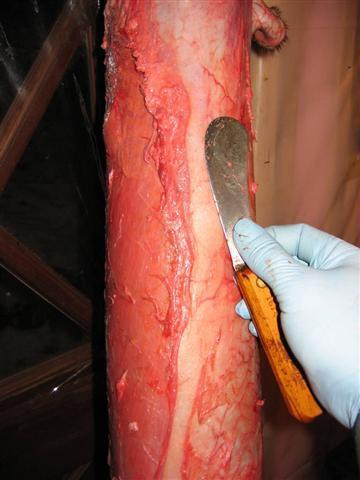
On these, notice the front legs. If they are skinned down to the feet, generally you can just tuck them inside the hide. If you cut them off up the ankle further, you may need to nail or tack them shut, like one in the photo. Also, notice the belly boards. I generally wedge something under them. If you don't, after the otter dries, it can be tough getting the belly board out. It doesn't take much, just enough to give you a little slack under the belly board, so it slips right out.

On the tails, I just try to keep them wide, and as straight as possible. With a little practice, they get real easy.
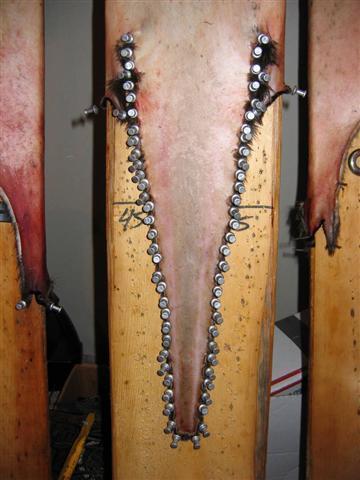
Pull down the tail snug, and put in a couple nails on each side of the tail base, to hold it in place. Always do the tail first on any species, not the legs on the belly side of the board. Doing the tail first, gives you maximum length.

Then I rough tack or nail out the tail. A couple nails between each of these will finish this one off.
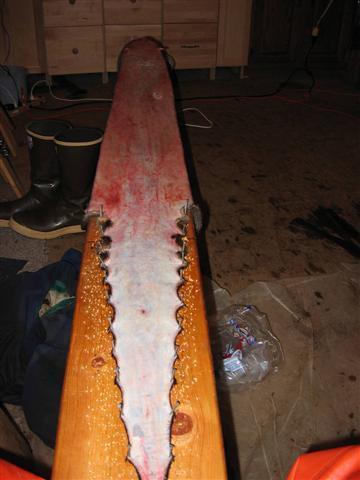
For the inspection window, I start up maybe 1 1/2" and cut out a small crescent shaped piece of fur. This is always done after the otter is boarded, and tail tacked out. Notice I scored the approximate piece to remove.
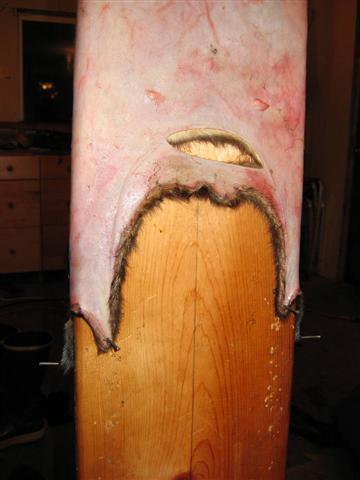
I even went so far as to put a hole in one, just to show proper repair.

I use dental floss. Notice all the fur is pushed back thru the hole, and none is showing on the leather side.
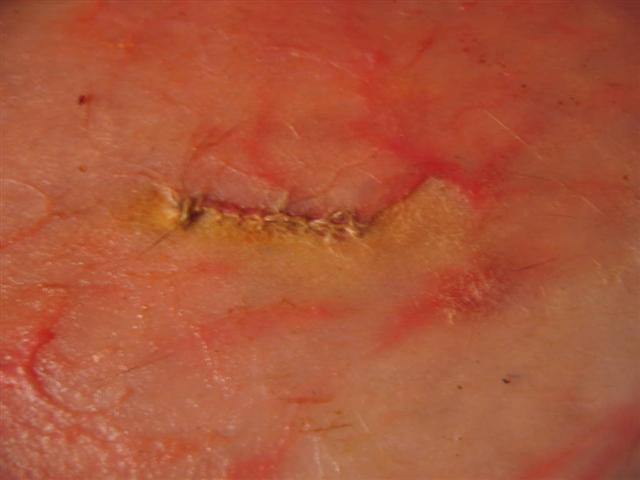
This is what I want my inspection window to look like.

Any other questions or comments? Feel free to PM if you prefer.
Trapper Ron, yes, by all means add on if you wish.
Otterman, depends on the otter, but you already knew that, huh? Do you do the case skin, clean skin method, starting from the back end, working towards the front. Sharpened moose-shin bone, native style? Or do you do them like beaver? Or maybe another way?






























